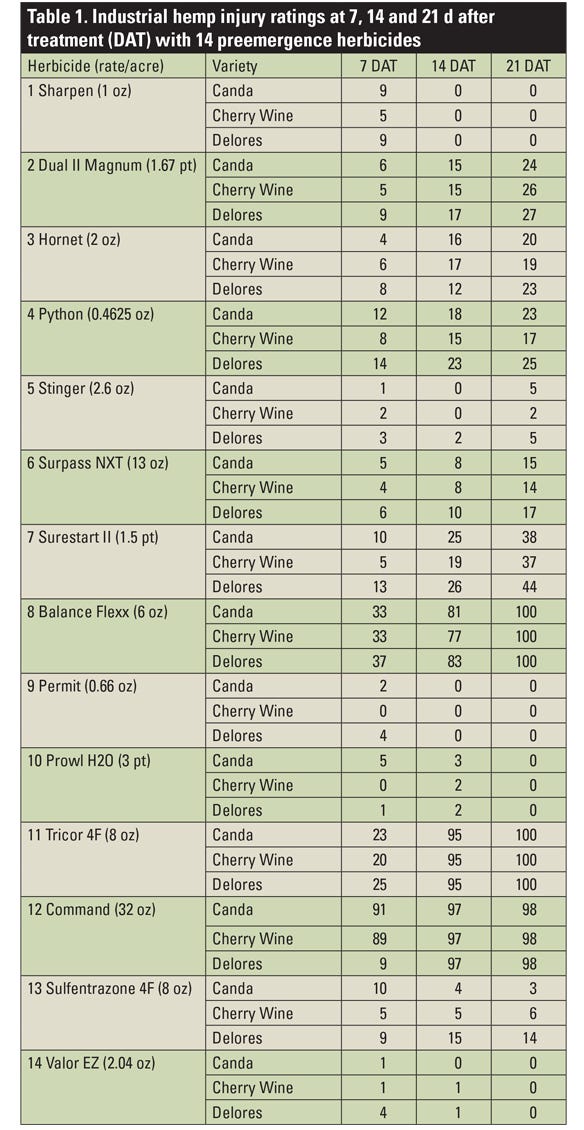October 20, 2020

Industrial hemp is getting more attention lately, as at least 46 U.S. states work on legalizing its production. However, herbicides registered for in-season weed control in industrial hemp are scarce or nonexistent.
To help with this issue, a greenhouse study was conducted this summer at the University of Nebraska-Lincoln to test tolerance of three industrial hemp varieties to preemergence herbicides commonly used in corn and soybean.
The study was laid in a randomized complete block design with a split-plot arrangement. The main plot consisted of 14 soil-applied herbicides (see table), and the subplot consisted of three industrial hemp varieties: Cherry Wine, Canda and Delores.

Each treatment was replicated three times. Seeds of industrial hemp were sown in 21-by-15-by-4-inch trays filled with a loamy textured soil. Each tray consisted of three rows of industrial hemp 5 inches apart, with each variety sown per row per tray at 30 seeds per row.
The seeds were placed a half-inch deep and apart. Herbicide application was conducted immediately after sowing. A half-inch of irrigation water was supplied for herbicide activation, and then watered daily as needed. Industrial hemp injury was assessed visually at seven, 14 and 21 days after treatment (DAT) using a scale ranging from 0% (no injury) to 100% (plant death).
Visual injury ratings were based on symptoms including chlorosis, necrosis, bleaching, stand loss and stunting of plants compared with a nontreated check. The experiment was run twice (Run 1 was initiated in June, and Run 2 in August), and data were analyzed in R (statistical software).
Varieties equally sensitive
There was no statistical difference between the two runs, so data were combined and summarized in Table 1. In general, injuries varied from yellowing to leaf bleaching and ranged from none to 100% (dead).
All three hemp varieties were equally sensitive, or tolerant, to tested herbicides (see table). Sharpen, Permit, Prowl H2O and Valor EZ caused light and temporary injuries within the first seven DAT. Beyond that, no injury was evident in any of the three varieties tested, indicating complete recovery.
Stinger, Sulfentrazone 4F and Surpass NXT caused temporary injuries (4% to 15%). So, these products could be used but with caution. Python, Dual II Magnum and Surestart II caused unacceptable injuries ranging from 25% to 40%, while Balance Flexx, Tricor 4F and Command caused injuries over 90% (plant death); therefore, these products should be avoided.
These results are similar to the results with the same herbicides from a recent field study (see Industrial Hemp Tolerance to Soil-applied Herbicides).
Cuvaca is a postdoctoral research associate; Scott is a weed science technologist; and Jhala and Knezevic are Extension weed management specialists at the University of Nebraska-Lincoln.
Source: UNL CropWatch, which is solely responsible for the information provided and is wholly owned by the source. Informa Business Media and all its subsidiaries are not responsible for any of the content contained in this information asset.
You May Also Like




